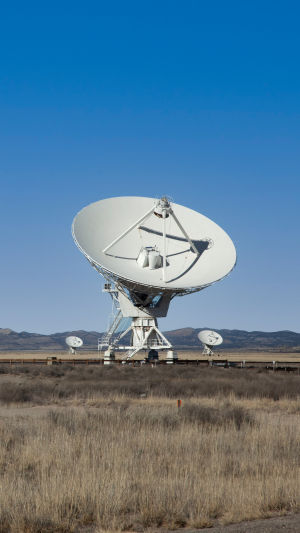The Very Large Array (VLA), located on the plains of San Agustin in New Mexico, is one of the world's most powerful radio telescope observatories.
It's a destination not just for astronomy enthusiasts but also for travelers fascinated by the mysteries of the universe.
For Lykkers planning a unique travel experience, the VLA offers a combination of scientific discovery and breathtaking landscapes.
<h3>What is the Very Large Array?</h3>
The Very Large Array consists of 27 radio antennas, each weighing over 200 tons and standing 25 meters tall. Together, these antennas work in unison to capture radio waves emitted by astronomical objects, helping scientists study phenomena such as black holes, distant galaxies, and quasars. The VLA has been instrumental in numerous discoveries and remains a vital tool for the astronomical community. The sight of these giant antennas stretching across the desert is both awe-inspiring and humbling.
<h3>Getting to the VLA</h3>
The VLA is located about 50 miles west of Socorro, New Mexico, on U.S. Route 60.
For those traveling from Albuquerque, it’s roughly a 2-hour drive (about 130 miles).
The scenic route takes you through wide-open landscapes, with stunning views of New Mexico’s rugged beauty.
There are no public transportation options directly to the VLA, so renting a car is the most convenient option.
<b>Parking</b>: There is ample free parking at the VLA Visitor Center. Visitors should plan to arrive early, especially during weekends, as the observatory can become busy during peak tourist seasons.
<h3>Visiting Information</h3>
The Very Large Array is open to visitors daily from 8:30 am to sunset, with the visitor center closing around 5:00 pm. The entry fee for adults is approximately $6, with discounts for children and seniors. It’s recommended to check their website in advance for updates on special tours or seasonal changes to opening times.
Once you arrive at the visitor center, you can explore interactive exhibits that explain how radio telescopes work, and the discoveries made by the VLA. The exhibits are informative yet engaging, making the experience enjoyable for both adults and children.
<h3>Tours and Self-Guided Walks</h3>
While visitors are free to explore the VLA on their own, guided tours are available on the first and third Saturday of each month at 11:00 am, 1:00 pm, and 3:00 pm. These tours, led by knowledgeable staff members, provide fascinating insights into the daily operations of the VLA, the science behind its work, and the latest astronomical research. Tour prices are generally included in the admission fee, but it’s best to reserve a spot in advance, as space is limited.
For those visiting outside of guided tour times, a self-guided walking tour is available. The tour includes informative signs and stops at several key points, including the control building and a close-up view of one of the massive antennas. The walking route is easy and takes around 30 minutes, providing plenty of opportunities to take photographs of the impressive telescopes against the vast desert backdrop.
A visit to the Very Large Array near Magdalena, New Mexico
Video by The Santa Fe New Mexican
<h3>Special Events</h3>
The VLA occasionally hosts special events such as night sky viewing sessions and astronomy talks. These events are ideal for Lykkers who want to experience the wonder of the cosmos firsthand. The observatory is located in a remote area, far from city lights, making it one of the best spots in New Mexico for stargazing. If you plan to attend a night event, dress warmly as temperatures can drop significantly in the desert after dark.
<h3>Nearby Attractions</h3>
If you’re looking to extend your adventure, the nearby town of Socorro offers additional points of interest. The New Mexico Tech Mineral Museum showcases an impressive collection of minerals and fossils, perfect for geology enthusiasts. Additionally, the Bosque del Apache National Wildlife Refuge, located about 20 miles south of Socorro, is a haven for birdwatchers and nature lovers. In the winter months, thousands of sandhill cranes and snow geese migrate to the refuge, creating a spectacular sight.
<h3>Where to Stay</h3>
Accommodations near the VLA are limited, but Socorro offers a range of hotels and motels for visitors. Most of these are affordable, with rates typically ranging from $70 to $150 per night. If you prefer a more immersive experience, camping is also an option at nearby state parks, though it’s essential to be prepared for cooler nighttime temperatures.
<h3>As a final point</h3>
The Very Large Array is a fascinating destination for Lykkers interested in space, science, and natural beauty. Whether you're walking among the towering radio telescopes, learning about cutting-edge astronomy, or gazing at the stars under the desert sky, the VLA offers a truly memorable experience. Make sure to bring your curiosity—and a camera—to capture the stunning views and the technological marvels at work in one of the world’s leading astronomical observatories.





